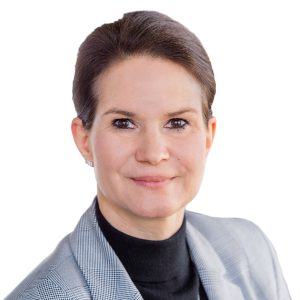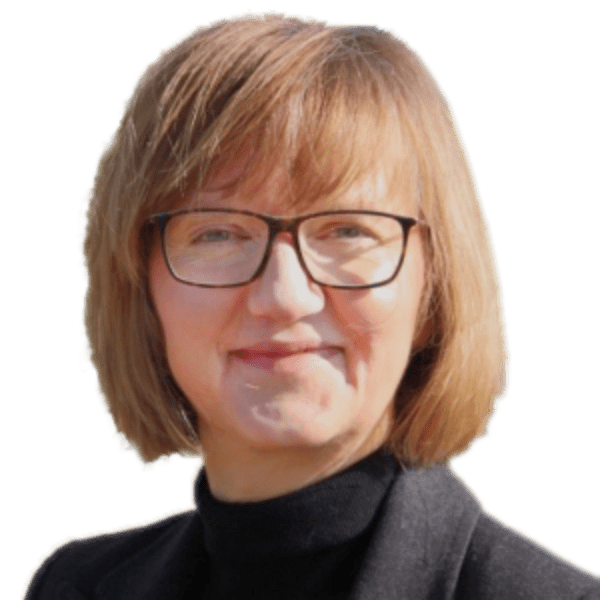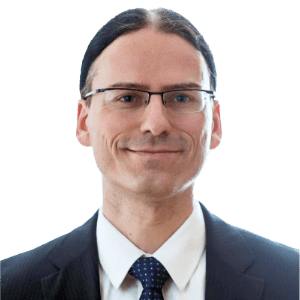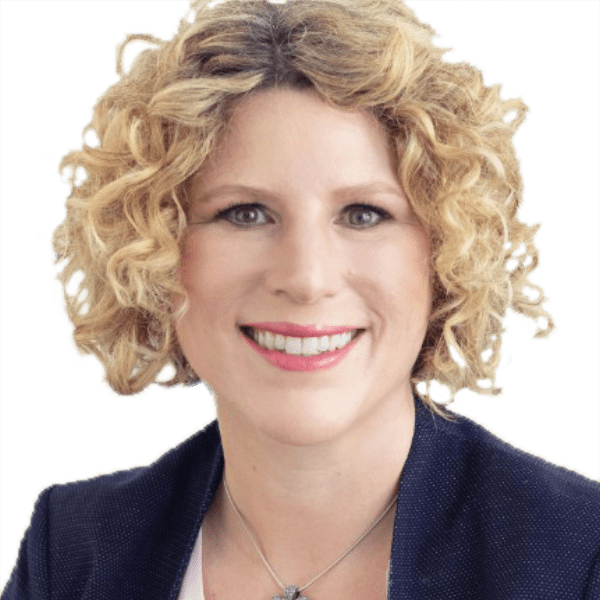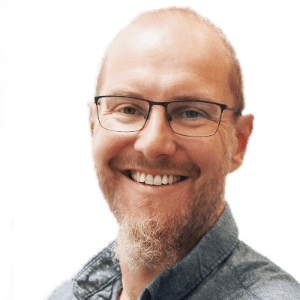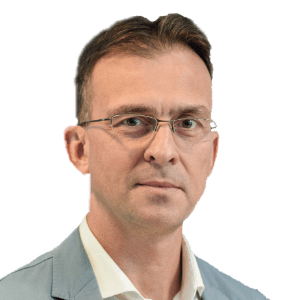Agenda 2024
Unlocking the Power of Exchange: Our Core Topics for Inspiration, Collaboration, and Growth
STAGE
CIOs & EAs
Afternoon sessions
- Dr. Selmin Danış Öncül – E.ON Digital Technology
- Dr. Markus Kress – Witt-Gruppe & Viet Duc Le – Bee360
- Frank Rehfeld – Atruvia AG
- Melanie Wohnert – Think-Y
- Dr. Petra Zimmermann – Bundesamt für Umwelt BAFU
- Tanja Konrad – Microsoft & Cristina Popa – contractuo
- Svetoslav Stamenov – ITR Management Consult OOD
ROOM 1
AI & Data
ROOM 2
Lean & Agile Ops
Morning sessions
Strategy and IT Leadership
What does IT strategy mean, how can IT best position itself, and what does this have to do with leadership? What does leadership mean in today's hybrid working models and large projects, especially in relation to strategy and how it contributes to strategy?
Session
Lean Leader Summit 2024
Intelligent inventory management for a complex spare parts supply chain
DB Fernverkehr AG’s supply chain is currently driven by a classical time-series forecast and reorder point planning procedures. This approach proves to be insufficient to manage new parts for new train series as well as complex repair life cycles of bigger components.
In her talk, Katharina highlights the most exciting steps in her journey to apply her AI toolkit to enable DB Fernverkehr to reach their economic availability targets for stocks in line with their “Strong Rail” initiative.
How enterprise architecture supports sustainability in IT?
Sustainability is one of the core critic topics for most of the companies nowadays. This topic has dimensions like social, economical and environmental. When it comes to IT, our responsibility is not only to provide digital solutions to support sustainability initiatives like decarbonization but also reflect this concept to our discipline. Business continuity, designing robust systems and adapting to changes in system capacity requirements is important. To do that, which practices of enterprise architecture do we need to apply in an agile environment? Which risks do we have in terms of resources? Thefinal aim is always supporting the processes with digital solutions in a sustainable environment.
Customer Experience & Gen AI
"The right message at the right time" has been the promise of digital marketing for many years. However, our everyday experiences show us that many companies fail to deliver on this promise. They fail because of the complexity of the simple equation:
[DATA x CONTENT = RELEVANT EXPERIENCES]
The existing DATA is inaccessible. The CONTENT is limited in terms of quantity and characteristics.
And the intelligence for assigning DATA to CONTENT in real time fails due to the number of possible combinations. This is the area that Generative AI promises to address.
Adobe has taken on and mastered this task as part of the conversion of its own business model. Along the way, a new technology platform, the Adobe Experience Cloud, and a new model of corporate management, the Data Driven Operating Model, were created.
Transformation Takes a Village: The Power of Interdisciplinary Collaboration
It takes a village to succeed with transformation. Transformation is a collective effort requiring diverse perspectives and collaboration across functions and disciplines. Often though, we approach this monumental endeavor through the narrow scope of our individual roles or perspectives, inadvertently overlooking the holistic view essential for success.
Successful transformation demands that everyone has a unified understanding of where the organization is today, where it is going in the future, and how it will get there – and how their role uniquely contributes to the outcomes. Successful digital transformation requires interdisciplinary collaboration, which leads to insights and outcomes that are greater than the sum of the parts.
In this session, we will explore the value of a comprehensive, interdisciplinary approach to transformation, what it looks like, and how business architecture serves as a critical enabler. Finally, we will discuss practical steps that can be taken to move these insights into action.
Whynde Kuehn
Strategy to Reality Author | S2E and Biz Arch Mastery Founder
S2E Transformation | Business Architecture Guild
Data Sources, Data Management and Data Spaces in the context of Sustainibility and Environmental Challenges
There are many different data sources with different spatial and temporal resolutions that are already used by experts in Environmental und sustainibility topics. This data is usually very domain specific, e.g. the monitoring of the number of insects to calculate an indicator for biodiversity.
To fulfill the requirements of monitorings and decisions in the field of circular economy, biodiversity, pollution and climate adaption use cases require combination of different data sources, data and the concept of data spaces as the European Green Deal Data Space.
The presentation will focus on the challenges and use cases.
Dr. Petra Zimmermann
Vice Director, Digital Transformation, Environmental Data, International Affairs, Law, Finance, HR
Bundesamt für Umwelt BAFU – Schweizerische Eidgenossenschaft
Beyond Change: Leading multiple transformation strategies for an agile and future-ready digital organization
C&A is undergoing strategic transformations to grow as a modern, sustainable and customer centric fashion retailor. This includes modernizing the brand, business models and the organization. In the tech department, a spectrum of transformations across various aspects and layers requires strategic orchestration and alignment. These include agile, technology, product, organization, culture and digital transformation. Insights will be shared about the strategies, challenges and concepts, as well as deep-dives on example use cases and lessons learned.
Discover how to get full visibility and insights of your digital products and services with ServiceNow common service/product data model (CSDM)
Every organization has an architecture that must be adapted to the given circumstances and future needs in order to stay competitive. Particularly in the case of federated structures, there is a high degree of complexity in terms of both business and IT. For a smooth process and a goal-oriented management, this should be done as proactively as possible in an orderly manner. To make this possible, the principles of governance have to be applied. This forms the organizational basis for Enterprise Architecture Management. It creates high-quality information that is used for strategic and operational decisions. The challenge we address is the lack of Enterprise Architecture Governance with focus on a federated environment. Our goal is a detailed and applicable concept for enterprise architecture governance.
For this purpose, the several components are examined more closely and detailed explanations are given in a compact form.
Enterprise Architecture Governance: EA Center of Excellence
Every organization has an architecture that must be adapted to the given circumstances and future needs in order to stay competitive. Particularly in the case of federated structures, there is a high degree of complexity in terms of both business and IT. For a smooth process and a goal-oriented management, this should be done as proactively as possible in an orderly manner. To make this possible, the principles of governance have to be applied. This forms the organizational basis for Enterprise Architecture Management. It creates high-quality information that is used for strategic and operational decisions. The challenge we address is the lack of Enterprise Architecture Governance with focus on a federated environment. Our goal is a detailed and applicable concept for enterprise architecture governance.
For this purpose, the several components are examined more closely and detailed explanations are given in a compact form.
Strategic Thinking: A Key Ingredient in Enterprise Architecture
In discussions pertaining to architecture, it is commonplace to incorporate the topic of strategy. However, it is imperative to define the concept of strategy. In this presentation, we shall delve into the essence of strategic thinking and its role in the formulation of sound strategies. We will draw insights from the experiences of a former chess world champion to exemplify the process of strategy development and its application in the context of enterprise architectures.
Following this presentation, attendees will possess the capability to promptly discern suboptimal strategies and be equipped with the knowledge required to craft exemplary strategies.
Modular IT Architecture – Promises and Reality in the Energy Sector
Scarce IT resources, a growing number of IT requirements, and an increasingly complex IT landscape – this is the situation many CIOs are facing today. Modular IT architectures can provide relief, promising faster IT developments and greater flexibility. But how realistic is the path to achieving this in the heavily regulated environment of a transforming energy sector? Where are the limits? Christian Büchner, CIO of SachsenEnergie AG, and Erik Köhler, Lead Enterprise Architect, provide insight into implementation and potential pitfalls.
Trustworthy AI: Balancing Innovation and Ethical Considerations
The use of Artificial Intelligence is currently transforming workflows across all industries, with new application scenarios hitting the headlines daily. AI-based systems take on tasks traditionally performed by humans and make decisions autonomously. This session is about the balance between technological progress and social values. We will explore real-world AI applications and discuss ethical dilemmas. To address these challenges, ethical principles essential for building trustworthy AI will be presented, emphasizing transparency, accountability, and fairness. The picture is completed with insights into current regulatory approaches and certification standards that need to be considered in the development and deployment of AI systems.
Prof. Dr. Claudia Heß
Coach & Professorin für Digitale Transformation
IU International University of Applied Sciences
LEAN Leadership 5.0 in the era of sustainable digital transformation
A LEAN LEADER 5.0 is capable of understanding both current and future challenges with a holistic perspective, mastering creative problem-solving skills to tackle problems at their roots, and, on this basis, involving stakeholders to adapt business strategy and related enterprise architecture, setting up a governance structure and EAM, and initiating projects to undergo continuous changes for sustainable growth.
Coming from the mass production era (1940 – 1950), LEAN PRODUCTION MANAGEMENT encompasses identifying value, mapping the value stream, creating flow, establishing a pull system, and striving for continuous improvement (https://businessmap.io/lean-management/).
Different from a LEAN PRODUCTION MANAGER whose main focus has been to keep efficiency and cost down, but with less concern about potential risks and opportunities, a LEAN LEADER 5.0 paves the way for more resilience in business by taking not only cost but also risks and opportunities into consideration. To achieve this, it establishes a stringent process and system landscape to enable data-driven decision-making.
Mrs. Yao Schultz-Zheng, Independent Management Advisory @ E-Mobility Sharing Economy Service, will present a case study and take the audience on her journey of creative problem-solving by applying the TOGAF enterprise architecture method.
Yao Schultz-Zheng
Co-Creation Advocate: V2X eMaaS and Smart City Sharing Circular Economy
E-Mobility Sharing Economy Services
Hey, Leaders: The Grassroots Transformation is Complete. It's Your Turn!
Over the past 15 years, significant changes have revolutionized our approach to work: Lean, Agile, Continuous <everything>... just to name a few. Much of this transformation has been established at the team level, evolving into cross-team collaboration.
While the business world seems to be undergoing a fundamental transformation, one aspect remains surprisingly non-agile and non-lean across most organizations: management.
The time is ripe for a leadership shift!
That's why, in this presentation, I aim to inspire all leaders to embrace real change: Change from within. Together, we will explore the essential leadership skills of today. These skills are not innate but rather learnable and trainable. As with anything that's trainable, it's merely a matter of will.
Embarking on a learning journey - or a transformation adventure - suddenly reveals doors we've never noticed before. Real change is adventurous and can be incredibly fulfilling - far more than yet another restructuring - and most importantly, it makes us feel alive.
Hey, Leaders: it’s your turn. Get ready. Get excited.
Radical Knowledge Management: helping the humans in an AI world
In our rapidly evolving technological landscape, Artificial Intelligence (AI) has become an indispensable tool in managing and processing vast amounts of information. However, as AI takes centre stage, it is essential to remember the critical role humans play in creating and leveraging knowledge effectively. Enter Radical Knowledge Management, a ground-breaking approach that recognizes the symbiotic relationship between humans and AI, allowing us to harness the true power of both.
In this thought-provoking, interactive session, we delve into the concept of Radical Knowledge Management and explore how it can empower individuals and organizations in an AI-dominated world. By emphasising the importance of human involvement, we shed light on how Radical Knowledge Management fosters innovation, creativity, and collaboration as well as sustainability and wellness.
Throughout the session, we examine strategies to support and grow the unique strengths of humans in a world enamoured with technology and analysis.
Attendees will gain an understanding of how Radical Knowledge Management can revolutionise their approach to knowledge management. They will learn practical techniques for integrating arts-based interventions seamlessly into their workflows, enabling them to tap into tacit knowledge to make informed decisions, solve complex problems, and drive innovation in their respective fields.
Join us for an enlightening session on Radical Knowledge Management and discover how we can enhance and build upon the unique capabilities of the human mind.
How to set up an impactful collaborative Enterprise Architecture practice
Enterprise Architecture Management has been around for four decades now. Many promises were made by this discipline, yet today most enterprises still don't have intentionally designed business and IT architectures. Executives, organisation-, product-, service- or software designers co-create the reality in companies in parallel, often ignoring each other's work. Enterprise Architects usually have some impact on IT application landscapes, but only a very limited impact on enterprise architectures.
This talk presents Intersection Group's approach "EDGY" that connects existing disciplines to enable collaborative co-design by the many true architects of the enterprise. In this approach Enterprise Architects shift more to a coaching/facilitation role connecting the dots of co-designers.
Bringing Empathy to Agile Teams, a Coaching Case Study
Sitting behind the screens all day long, we get so disconnected from the human world that we forget there are people with dreams, emotions, goals, anxieties, and day-to-day problems behind those screens. This case study introduces an innovative paradigm for team building through collaborative sessions.
The primary objective of these sessions extends beyond fostering trust, respect, and openness—they also aim to instill empathy as the cornerstone of human interactions. This coaching case study will unravel how these sessions facilitate meaningful interactions, enabling participants to self-reflect, learn more about each other and foster a profound sense of personal connection.
Games leaders' play
In order to transform an organization, leaders need to transform themselves.
To do so, leaders need to take a mindset shift from "OR" thinking to "AND"-thinking. They need to realize the opportunity they hold in their hands, namely: consciously shaping the system their organization lives in. This in turn shapes the entire culture. In a sense leaders have to play a different game than their teams to be successful throughout the transformation.
Based on a short, interactive live game, I will highlight different mindsets, that are prevalent in today's leaders. From their we will explore how leaders play a different game, than their teams, and what mindsets are most supportive for the transformation.
I'll close with some conrete advise and handy tips for leaders to up their game!
Session
Lean Leader Summit 2024
Session
Lean Leader Summit 2024
Session
Lean Leader Summit 2024
Session
Lean Leader Summit 2024
Session
Lean Leader Summit 2024
